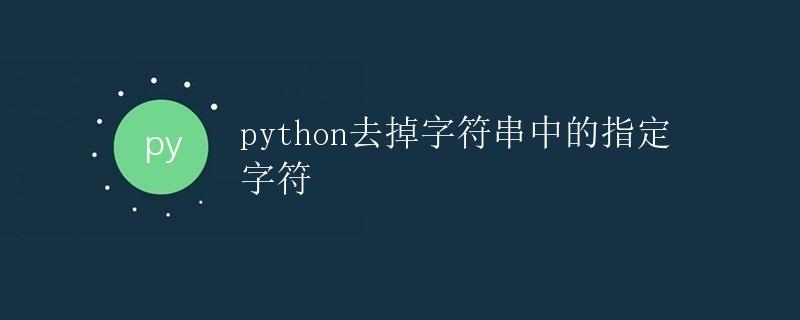Python去掉字符串中的指定字符

在Python中,有多种方法可以去掉字符串中的指定字符。这在处理文本数据时非常常见,例如去掉空格、标点符号或其他特定字符。本文将详细介绍如何使用不同的方法去掉字符串中的指定字符。
方法一:使用replace()函数
使用replace()函数可以将字符串中的指定字符替换为空字符串,从而达到去掉指定字符的目的。
# 定义一个字符串
string = "hello,world!"
# 使用replace()函数去掉逗号
new_string = string.replace(",", "")
print(new_string)
运行结果:
helloworld!
方法二:使用正则表达式
使用正则表达式可以更灵活地匹配字符串中的指定字符,并替换为空字符串。
import re
# 定义一个字符串
string = "hello,world!"
# 使用正则表达式去掉逗号
new_string = re.sub(r",", "", string)
print(new_string)
运行结果:
helloworld!
方法三:使用列表推导式
通过列表推导式,我们可以遍历字符串中的每个字符,将不是指定字符的字符添加到一个新的字符串中,从而实现去掉指定字符的效果。
# 定义一个字符串
string = "hello,world!"
# 去掉逗号
new_string = "".join([char for char in string if char != ","])
print(new_string)
运行结果:
helloworld!
方法四:使用str.translate()函数
str.translate()函数可以实现复杂的字符替换操作,包括删除指定字符。我们可以先创建一个映射表,然后使用translate()函数删除指定字符。
# 定义一个字符串
string = "hello,world!"
# 创建映射表,将逗号映射为None
trans_table = str.maketrans("", "", ",")
# 删除逗号
new_string = string.translate(trans_table)
print(new_string)
运行结果:
helloworld!
总结
本文介绍了四种常见的方法去掉字符串中的指定字符,包括使用replace()函数、正则表达式、列表推导式和str.translate()函数。在实际应用中,可以根据需求选择最适合的方法来处理字符串数据。
 极客笔记
极客笔记